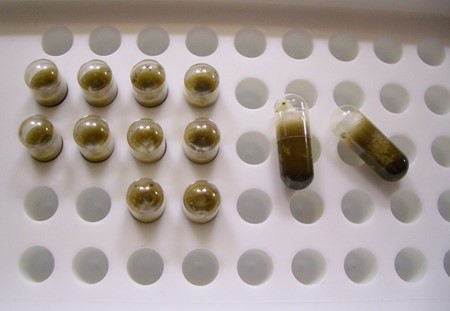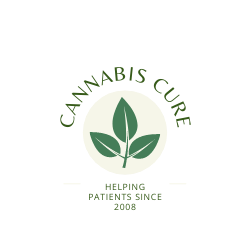Introduction
We are often sent emails asking for advice about suppositories, so we have put together this article to help with your research.
There are several ways to use cannabis medications, however, using cannabis suppositories has been shown to be the most controversial but arguably the most effective.
Medications administered per rectum (PR) are ideal for local or systemic treatment, as the rectal mucosa has a blood and lymph supply that is capable of effective systemic absorption. Drugs administered PR has a faster action than via the oral route and a higher bio-availability – that is, the amount of effective drug that is available is greater as it has not been influenced by upper gastrointestinal tract digestive processes.
The rectum is relatively underused as a route for safe administration of medicines, arguably due to the intimacy of the site compared with more socially accepted routes. Let’s face it, its unpleasant sticking things up your butt, however, in Europe, particularly France, rectal administration of medicines is a very common and widespread practice.
This is due to the efficiency of delivery to the bloodstream and the fact that this form of administration bypasses the body’s vital organs such as the liver.
Cannabis suppositories allow for larger doses of plant medicine without the head high versus smoking and ingesting orally. It certainly requires far more research before stating that this method of administration is not effective. Several different ingredients can be used to form the base of a suppository: cocoa butter, coconut butter and glycerinated gelatine are commonly used.

How Do Cannabis Suppositories Work?
A suppository is an ovular capsule that is inserted vaginally or rectally. In the case of rectal cannabis suppositories, the capsules are typically about an inch long and are generally made from cannabis-infused cocoa butter, despite the research saying that this method has far less absorption potential.
Once inside the body the medicinal compounds in suppositories are quickly absorbed through the intestinal wall directly into the bloodstream.
This results in superior bioavailability over other forms of administration. This basically means you get more of the medicinal effects of the product using a suppository than if you smoked or ate the same amount. Like edible cannabis, the effects of a suppository are long-lasting, often ranging between 4-8 hours depending on the individual’s physiology and tolerance to cannabis.
Who Should Use Cannabis Suppositories?
Suppositories are an ideal choice for many patients, such as those undergoing chemotherapy, the elderly, and babies who can’t smoke or swallow pills.
Also, surgery patients who are not allowed to ingest anything immediately before or after a procedure, and patients in severe distress who can’t wait for oral cannabis to take effect. There are also some people who simply have sensitive stomachs that are irritated by ingesting cannabis.
The rectal route is a good alternative to the oral route for pediatric treatments because these dosage forms obviously don’t need to be swallowed or be taste-masked.
Rectal forms can also be administered in an emergency to unconscious or vomiting children. Due to the large surface area available for absorption, rectal administration provides the most effective way for your body to take in the cannabinoid compounds.
Absorption can be slowed by faecal matter or if a patient is suffering from dehydration. Cysts or tumours inside the rectal wall may also slow the compounds entering the bloodstream. However, the direct application of cannabinoids to these areas can help to activate local endocannabinoid receptors.
When administered rectally, the medicine directly enters the bloodstream through the cell walls and goes directly into the body, which is quickly distributed through the vascular system. It is a direct application to the bloodstream, bypassing the liver, which significantly reduces the ‘high’ for many patients.
How Do You Use Cannabis Suppositories?
Suppositories are quick and easy to make.
Utilizing the techniques for cannabis extraction, patients can simply place this oil into gelatine capsules for insertion. These can be individually weighed using assets of jeweler’s scales (eBay) to help ensure consistent doses. Keep these refrigerated out of the reach of children and pets.
Capsules inserted rectally are more efficient than oral administration and those treating themselves with cannabis oil capsules should consider trying this method of ingestion.
Lie on your side and pull your upper leg towards your chest. Use your index finger to insert the suppository into your rectum. Place the suppository 1-1½ inches into the rectum, past the inner sphincter.
To prevent the suppository from sliding out, hold your buttocks together and squeeze your sphincter muscles tightly for a few seconds. Stay lying on your side for at least a few minutes.
Important to note – There’s a risk of slippage for the next few hours, so many patients administer suppositories at bedtime.
Bases to mix with Cannabis Oil
- Coconut oil is made by cold-pressing oil from coconut meat. It’s solid at room temperature and becomes liquid when heated.
- Coconut butter is made by pureeing coconut meat, including the oil.
- Cocoa butter is a fatty substance obtained from cocoa beans (used primarily in the manufacture of cosmetics and chocolate).
- Gelatine (see above pic) is a protein derived from collagen and is an animal-based product.
- Glycerine suppositories are used to relieve occasional constipation.
What To Expect from Cannabis Suppositories?
You will experience what can best be described as a warm sensation starting from the pelvic region.
Many patients report pain relief almost immediately, without any psychoactive effects. Suppositories allow patients to rapidly deliver the active ingredients in cannabis medicines. The rectum is rich in blood vessels.
Yes, some people find it bizarre. There are alternatives, but once patients become accustomed to the practice this is a valuable treatment method for medical cannabis patients.
The Science Behind Suppositories
In short, suppositories avoid the gastrointestinal system where metabolites separate and break down the compounds. One of these metabolites is 11-Hydroxy-Δ9-THC, which is a psychoactive compound like Δ9-THC. This means there is little to no psychoactive effect on the patient using PR. Basically you will not experience the associated high that cannabis administered by other methods can produce. (The word ‘Delta’ is either written or is also expressed as the Greek letter Δ)
The liver is a key to getting high. THC travels through the liver to the brain to induce a head high. When smoked, it travels through the lungs to the villi, then on to the liver. When taking it orally, it makes its way to the liver through digestion. This method takes the longest because of the digestive process and the amount of travel it takes to get to the brain.
Are Suppositories An Effective Way Of Taking Cannabis Oil?
This is quite a hot topic, with many conflicting views. Our view is that if you can’t take the oil orally or want to try to avoid the ‘high’ then using suppositories is the answer. Furthermore, suppositories generally allow you to take more oil than you would possibly orally. Those with cancers such a Prostate or Colon cancer can benefit as the oil does will be nearer to the source. We have provided some references below, should you wish to research further. The article written by Eloise Theisen is particularly useful.
Further Reading
How and where to safely buy RSO medical cannabis oil online
References:
Chemical stabilization of a Delta9-tetrahydrocannabinol prodrug in polymeric matrix systems produced by a hot-melt method: role of microenvironment pH.
ElSohly M.A.- Gul W.- Walker. Pharmacokinetics and Tolerability of Δ9-THC-Hemisuccinate in a Suppository Formulation as an Alternative to Capsules for the Systemic Delivery of Δ9-THC.
Baviskar, P., Bedse, A., Sadique, S., Kunde, V., & Jaiswal, S. (2013). Drug delivery on rectal absorption: suppositories. Journal of Pharmacological Science Review, 21(1). 70-76.
De Boer, A.G., Moolenaar, F., de Leede, L.G., Briemer, D.D. (1982). Rectal drug administration: clinical pharmacokinetic considerations. Clinical Pharmacokinetics, 7 (4):
286-311.
Elsohly, M.A., Little, T.L., Hikal, A., Stanford, D.F., Walker, L. (1991). Rectal bioavailability of delta-9-tetrahydrocannabinol from various esters.
Perlin, E., Smith, O.G., Nichols, A.L., Almirez, R., Flora, K.P., Cradock, J.C., & Peck, C.C. (1985). Disposition and bioavailability of various formulations of tetrahydrocannabinol in the rhesus monkey. Journal Pharm Science, 74 (2): 171-4.
Help and Advice
If you need advice or help with Medical Cannabis, please use the contact form.
We try to answer all emails within 24 hours and are happy to help and provide advice on all aspects of Medical Cannabis treatments in complete confidence.
Disclaimer: Please note that whilst we consider ourselves subject matter experts regarding Medical Cannabis, we are not medically trained professionals. We are an information resource and there is still limited evidence that Medical Cannabis can cure all the illnesses we discuss here. We recommend you do as much research as possible, and where practical seek professional medical advice before proceeding with Medical Cannabis oil. In short, always do your homework.

